Sample To Do List and Checklist
-

Prioritized To-Do List
download now -

Daily Things To do List Template
download now -

Academic To-Do List
download now -
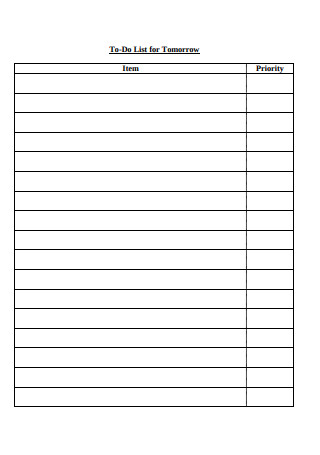
To-Do List for Tomorrow Template
download now -

Scheduling Day with a To Do List
download now -

Scholarship Application To Do List
download now -
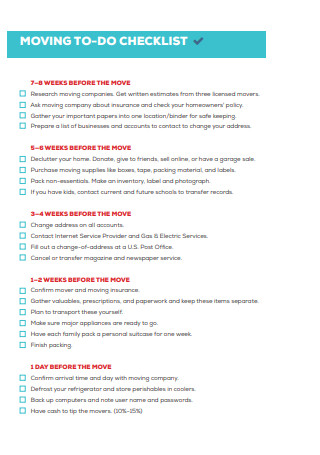
Sample Moving To Do Checklist Template
download now -

Move Plannerthings To Do Checklist
download now -

Sample to do Checklist Template
download now -

Arts and Sciences Graduation To-Do Checklist
download now -

New Student To-do List
download now -

Pregnancy to do Checklist
download now -

Sample Ultimate Seller to do Checklist Template
download now -

Industry Day To-do Checklist
download now -

Candidate to do List
download now -
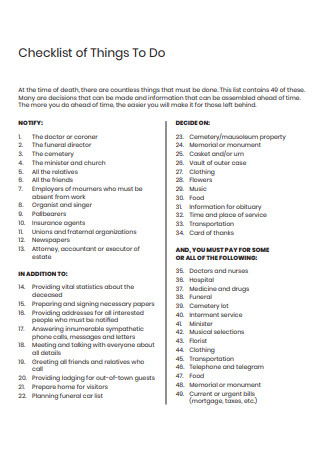
Checklist of Things To Do
download now -

Scholarship Application Checklist Template
download now -

Simple To Do List Template
download now -

Surviving Spouse Financial Checklist
download now -

Sample New Student Checklist Template
download now -

Study Group Checklist Template
download now -

Delivery Order Checklist Template
download now -

To Do List and Deadlines Checklist Template
download now -

Checklist for Formatting Checklists Template
download now -

Direct Marketing Checklist
download now -

Formal to do Checklist Template
download now -

To-do List Widget and Task Property Features Template
download now -

Total Home Inspection Checklist
download now -

Pedal Tour Checklist and To Do List
download now -

Coordinator To Do Checklist
download now -

Professional Staff Orientation Checklist for Supervisors Template
download now -

Retreat Planeers to do Checklist Template
download now -

Pre-Camp To-Do Checklist
download now -

Checklist for ScrumMasters Example
download now -

Sample Tax Checklist Template
download now -

Member To Do Checklist
download now -

Pre Orientation Checklist
download now -

Interships Student Checklist Template
download now -

Returning Home Checklist Template
download now -

Annual To Annual To-Do List
download now -

Winter Orientation Checklist
download now -

Sample Meeting Planning Assistance Checklist Template
download now -

Restaurant Pre-Opening Checklist
download now -

Graduate to do List for Residency Template
download now -

New Student Checklist Template
download now -

Going Home Checklist Template
download now -
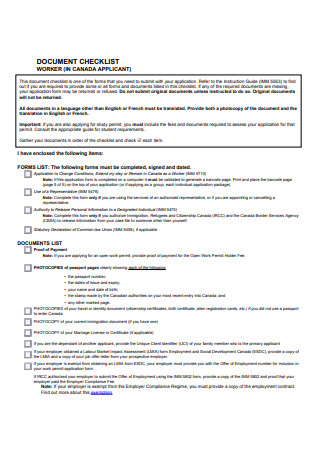
Sample Document Checklist Template
download now -
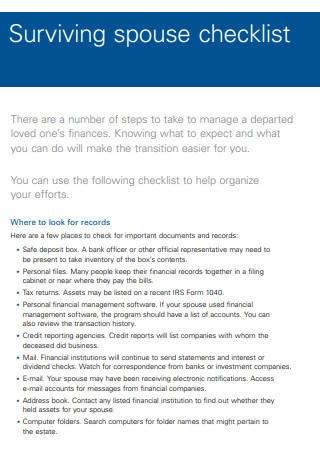
Surviving Spouse Checklist
download now -
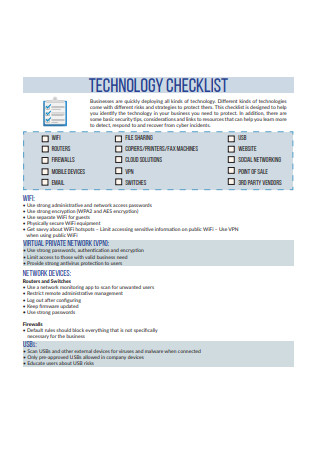
Formal Technology Checklist Template
download now -

Sample Checklist for Family Assessment Template
download now -

Building a Smarter To Do List
download now
FREE To Do List and Checklist s to Download
50+ Sample To Do List and Checklist
Sample To Do List and Checklist
What is the Difference Between a To-Do List and a Checklist?
The Different Types of Checklists
Uses and Importance of Do-Lists and Checklists
How to Create Your Checklist?
FAQs
How many items should be in a to-do list?
How long should a to-do list be?
How do I handle a big to-do list?
How do I simplify a task?
What are the benefits of a checklist?
50+ Sample To Do List and Checklist
What is the Difference Between a To-Do List and a Checklist?
There is always a misconception between a to-do list and a checklist. Although these lists nearly have the same purposes, and that is to organize and track all the essential things you need to accomplish, they vary according to their specific functions. For example, you use checklists when you have to go over a fixed set of things, such as the things you need to bring for travel or the areas you need to go to. In short, you often use a checklist when there is a standard or established procedure or objects you have to check. On the other hand, you use a to-do list, mostly used when there are a set of tasks you want to get done, yet has still to be determined. In this case, other tasks, such as cleaning your house, buying groceries, and other stuff will be added later on. At the same time, the content of your to-do list varies depending on your specific needs, unlike your checklist, wherein it has predetermined content with repetitive activities for you to follow.

The Different Types of Checklists
Although there are various types of checklists used for different tasks, all of them have the same functions. When you have a big project at work, having a list is handy in organizing all the people, materials, and tasks you need to achieve good quality output. At the same time, your checklist helps you be productive throughout your tasks by delegating most of your responsibilities to your group without losing sight of your goal.
Listed below are a few examples of the different types of checklists commonly used at work, in school, and even at home:
Uses and Importance of Do-Lists and Checklists
You’ve seen many people use to-do lists and checklists to keep track of their daily activities and tasks at work, but have you ever thought why they do that? For most of them, they prefer to use a checklist for them to complete their tasks efficiently without missing any detail as well as causing much error during the process. This includes performing quality inspections, product examination, as well as the verification and collection of data analysis. If you want to learn more about the uses and importance of your to-do lists and checklists, here are some examples below.
- It inspires you to be productive. For some reason, people are more motivated to work on their tasks once they know the flow of their activities. And you’ve got to admit, marking those completed tasks sure is a great feeling, especially when you’ve been dying to accomplish them for a very long time. Hence, having a to-do list and a checklist makes you more productive during the day.
- It helps you organize your stuff. With all those tasks piling up on your desk each day, sometimes you’ve got this feeling when you don’t know which job you wish to start work on. However, with the help of your to-do list and checklist, you can quickly finish every job handed to you by organizing every one of them from the easiest to the most complicated activity, allowing yourself to prioritize the essential tasks.
- It helps with your productivity. Tasks are never-ending. You finish one, then another batch comes, and what’s more, they are repetitive and complicated, and sometimes you need extra hands from your teammates, especially when you’re dealing with a big project. Thus, with the help of checklists, you can accomplish your task efficiently by breaking down large chunks of tasks into smaller ones, delegating each responsibility with your teammates to increase your productivity without losing control of the situation.
- It saves you time. All projects and tasks have their deadline. If you fail to meet their designated deadline, then you are at a disadvantage. But, if you were able to organize everything from the people, materials, equipment, and tasks required to complete the project, you can save extra time to review your work and may prepare and respond in case unexpected events occur during your assignments.
How to Create Your Checklist?
Some tasks are repetitive at work, such as evaluating your employees’ performances, checking your production, or maybe inspecting whether your employees are following your company standards and procedures. Even if they are the same task you do every day, sometimes you tend to forget some of the crucial points in your tasks. However, if you have a checklist to guide you through each task, things would be easier for your part, allowing you to boost your productivity while being consistent with the quality of your performance. Create one for yourself today and follow these few basic tips in making an effective checklist.
Step 1: Think of All the Things or Tasks You Need to Accomplish
You face a lot of activities you face every day, whether you are at work, at school, or even at home. Think of all the things you may need for an event or perhaps a trip and create a mental list on it. If your tasks are work-related, such as food inspection or examining articles, do the same.
Step 2: List and Organize Each Item By Category
Now that you know what to do, list them down on a piece of paper and organize them by category. In this way, you will find it easier to sort out and finish each of your tasks in no time. When you categorize your tasks, think of it as if you are buying your groceries or when you are packing your things for travel. What are the essential tasks or materials needed for your project? Categorize each item in your list according to their functions and classifications.
Step 3: Keep Your List Neat, Simple, and Understandable
What is the point of having a checklist if you couldn’t understand its content? Keep your content neat, simple, and understandable. Don’t make your sentences too long, and don’t over-explain the things. Instead, use keywords that are easy to understand. At the same time, do not overcrowd your list with too many words. Maintain sufficient spacing and use a font style and size that is legible to you and your reader.
Step 4: Check the Areas You’ve Accomplished.
As you accomplish each task, go back to your checklist and put a check mark on each finished item. Check whether the items you requested were delivered according to your list. See to it that every task is accomplished correctly based on your company standards and your checklist before you consider the item done.
Step 5: Review Your Checklist and Update It From Time to Time
The purpose of your checklist is to maintain consistency and to establish order in performing your tasks. Make sure that your list is not outdated. Hence, you should review and update it from time to time for your checklist to be attainable, timely, and fit for the requirements of your work or projects.
FAQs
How many items should be in a to-do list?
It’s nice to list all the essential tasks you need to finish. However, having a shorter to-do list is preferable since it keeps you away from potential distractions, allowing you to complete all the tasks you have for the day. Around three to five items should be enough for your weekly to-do lists or your daily to-do lists.
How long should a to-do list be?
As stated earlier, it is preferable to keep your to-do list short and attainable. Why? Because having a long to-do list is overwhelming for your brain. The longer your list goes, the less you feel motivated to accomplish your tasks. Thus, there’s less chance you can achieve anything within the day since your mind would undergo procrastination.
How do I handle a big to-do list?
The bigger your tasks are, the more complicated they become. However, there are many ways you can cope up with them and accomplish each one of them. The first thing you should do is to stay at least one day ahead of your tasks. Stop being a procrastinator and tackle your projects ahead of time. List down all your tasks in your to-do list and rank them according to their difficulty and prioritize the ones that are difficult and are nearer to your deadline. And lastly, always remember to look at the big picture and make sure that your list is timely attainable.
How do I simplify a task?
One way for you to complete your task is to simplify your process of accomplishing it. For you to do this, you need to list down all the things you need for your activity, then organize them according to the simplest to the most complicated task. As much as possible, start with the most complicated task down to the simplest ones and apply proper time management for each job. Stay organized and remove unnecessary things from your process. If you want, you can multitask to keep up with your deadline.
What are the benefits of a checklist?
Having a checklist has a lot of benefits. For one, you can get all your chores, tasks, and other activities are done in no time. It keeps you from straying away from your responsibilities, and it allows you to track and manage them as you follow through the process, allowing you to save more time and brainpower for other things. And at the same time, it helps you achieve your goals faster by assisting you in delegating various tasks to your teammates.
The more complicated your project becomes the more steps, people, and resources you need to accomplish each task. With this in mind, you need to ensure that not a single factor is forgotten for you to produce excellent output. Thus, having a checklist as your tool allows you to manage, delegate, and keep track of each task needed to perform your project.
